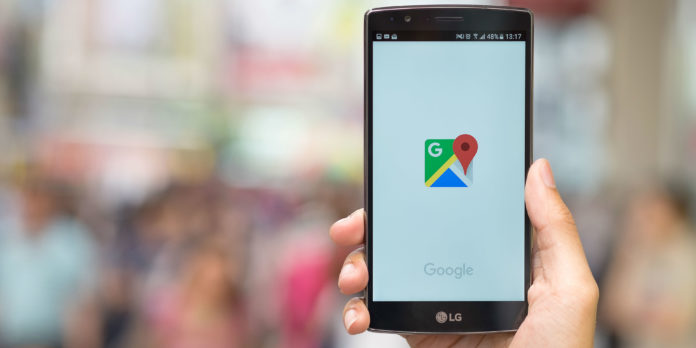
I’ve been an iPhone user since 2011. Back then, it was never actually a question whether I’d choose iOS or Android as a smartphone platform. My friends had iPhones, my coworkers had iPhonesanyone who was anyone, actually, had an iPhone.
But that was more than half ten years ago. Nowadays, Android is truly on equal footing with iOS( and in fact, the two borrow, steal, and share “new” features so often you’d think they were teenage sisters sharing the same wardrobe ). And after so many years on iOS, I felt the time was right to give Android a try full time. As a gadget novelist and reviewer, I’ve sampled dozens of iOS, Android, and Windows Phone machines over the years, but I’d never genuinely given a non-iOS machine a long-term trial. Until now.
Since December, I’ve been using aHuawei Nexus 6Prunning Android 7.1.2( Nougat) as my main machine. There’s a lot to love about it, but having been an iPhone devotee for so long, there are a handful of things that drive me crazy.
The 5 worst Android features
1) Mysterious notifications
Perhaps I simply need to clear out old notifications in a more timely fashion, but I have one consistent issue with my Android phone: I get mysterious vibration notifications, and I can’t determine what they’re from. My phone will vibrate, I’ll pick it up, check the notifications onscreen, and … they’re exactly the same notifications I ascertained the last time I checked my phone. I’ll check my text, Google Hangouts, and email, andif there’s nothing new there, I just end up shrugging my shoulders and sitting my phone back up. Whatever notification I get clearly wasn’t important enough to garner further activity than that.
I reckon the problem here is with the phone’s bundled notifications. While organized and convenient as you’re looking through all your notifications, if you haven’t cleared them out, they can hide recent notifications from other apps further down the list.( Fortunately, if you do detect an app is sending you unwanted alerts, you are able to press and hold that notification to adjust its fixeds .)
2) The app drawer
Apparently, the app draweris something most Android phone owneds desire, but I just can’t seem to get allows one to it. Old habits die hard, I suppose. I’d rather have my most-used apps on my main home screen, and my next favorite apps a swipe away to the right. Tapping the six-dot app drawer icon at the bottom centre of the screen, then scrolling and hunting to find the app I’m looking for just doesn’t seem efficient.
3) The hardware camera shortcut
For a while, I was perplexed as to why sometimes I’d pull my phone out of my pocket and the camera would be open.( And in fact, said camera had snapped a handful of dark images from inside my pocket .) Becomes out, with most recent Android phones, you can quickly access the camera, even if yourphone is locked, by doubled tapping the power button. It’s a useful shortcut, for sure, unless you have a tendency to accidentally press the power button as you’re drawing your phone outas I seem to do.
Luckily, by heading into the Settings menu there’sa way to switch this shortcut off. That was definitely the right move for me: Accidentally switching on the camera was definitelythe culpritof some of those phantom vibrations I’d been so confused about.
4) Adaptive Brightness
 Photo via Andri Koolme/ Flickr ( CC-BY)
Photo via Andri Koolme/ Flickr ( CC-BY)
To be fair, this feature drove me crazy on iOS too: Auto brightness. On Android, it’s called Adaptive Brightness, butit is seriously out of control. My dad, looking at a photograph on my phone, asked,” Why is it doing this ?” as the screen shifted darker, then brighter again. Sitting on a recent airliner flight reading a book on my phone, the brightness distractingly and continually shifted up and down. Perhaps the mild turbulence was changing the slant of my phone and how much sunlight its sensor detected? Regardless, it was irritating. Whether in bright sunlight, dim sunlight, or any light situation actually, with adaptive brightness enabled, the screen’s brightness level sporadically switchings for no apparent reason. I headed to Specifies, Display, and I switched Adaptive brightness off. I’ll just manually adjust the phone’s brightness to my personally liking as needed.
5) Incompatibilities with iOS text messaging
I’m mostly OK given the fact that I know that I am a green bubble now.( That is, when I text withiPhone owneds, my messages show up as green text bubbles, rather than the blue ones of fellow iOS consumers .) However, I wasn’t prepared for a few other inter-operating system incompatibilities.
For example, when iOS-using friends or own family members mail me a video, it is compressed beyond acceptance. It doesn’t matter whether I’m connected to a data network or Wi-Fi networkthe video is tiny, fitted with artifacts, and scarcely watchable. I have to then ask that contact to email me the video so I can get afull resolution, watchable version on my phone.
Group text message weaves are also an issue. I won’t receive messages at all from some iOS usersbut looked forward to receiving messages from others. This makes in a complete-enough message wove were told that I’m missing important pieces. Media sent on group weaves is also typically missing.
I also miss the recent special effects that were introduced in iOS 10, like the ability to send virtual confetti along with a congratulatory message( or balloons, or laser rays ). Both iOS and Android let you mail stickers, but those full-screen message effects were fun.
On the whole , nothing about switching to Android has been a bargain breaker, though. My mainissues have simply been with a few default phone fixeds that just didn’t jivewith my personal predilections. That’s, thankfully, very easy to fixand easy to deal with.
With that out of the route, here are the Android features I’ve grown to desire .
Read more here: http :// www.dailydot.com /~ ATAGEND









